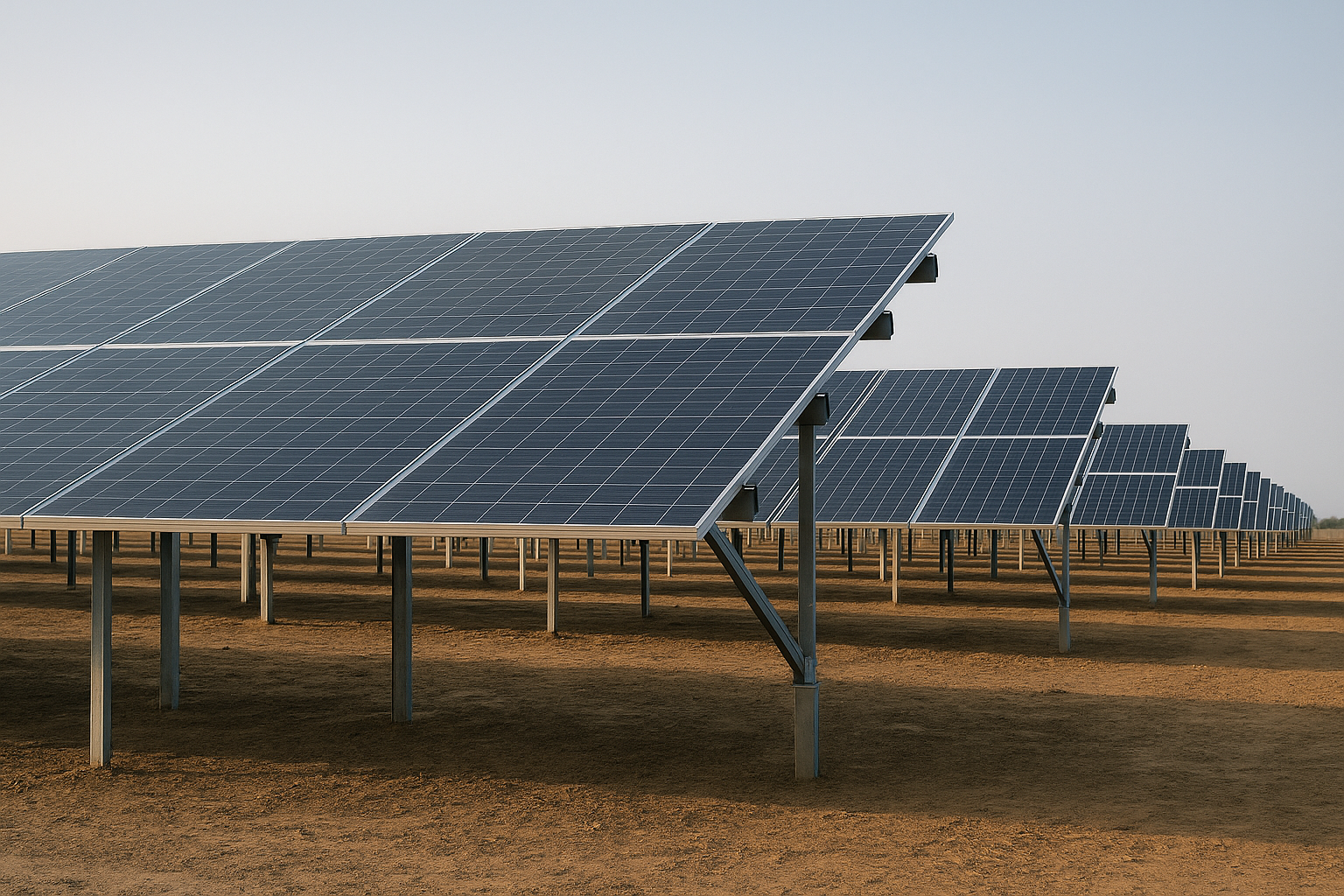India’s residential rooftop market is scaling fast under the Union Government’s PM Surya Ghar: Muft Bijli Yojana (PMSGMBY). The scheme targets 1 crore households with support that can deliver up to 300 units of free electricity per month when a compliant rooftop system is installed. The Cabinet approved a total outlay of ₹75,021 crore, and implementation momentum has been strong through 2025.
What exactly does the scheme fund?
The Central Financial Assistance (CFA) is structured as follows:
-
60% subsidy of the benchmark cost for systems up to 2 kW.
-
40% subsidy of the additional cost for the 2–3 kW slab.
-
Subsidy is capped at 3 kW per household.
Based on current benchmarks, this translates to roughly ₹30,000 per kW for the first 2 kW and ₹18,000 per kW for the next 1 kW, with a maximum of ₹78,000 per home.
Households apply through the National Rooftop Solar portal, choose empaneled vendors, and track progress online, which has materially simplified adoption in 2024–25.
The 300-units benefit, clarified
The “up to 300 units free” promise is a policy benefit tied to rooftop generation, not a blanket cash payout. In practice, a ~3 kW RTS can typically generate over 300 units/month under good conditions, often offsetting most or all of a modest household’s bill. The government’s own communications, 2024–2025 guidelines, and subsequent PIB updates reiterate this goal.
2025 momentum: adoption and state-level boosts
By early–mid 2025, the scheme had disbursed several thousand crores in subsidies, with lakhs of beneficiaries connected. States are layering additional incentives and process simplifications. For example, Kerala moved to waive certain rooftop application/registration fees under PMSG (subject to regulator approval), and Maharashtra launched a state-top-up for low-consumption households to push bills towards zero. These measures directly expand demand for compliant rooftop BoS and mounting kits. TWhy mounting structures are center-stage in 2025
As volumes surge, the mounting system is pivotal for safety, performance, and speed-to-install:
-
Structural reliability across diverse roofs
India’s rooftops range from RCC flats to sloped tiled and corrugated sheets. Mounting must address wind uplift, seismic, and waterproofing details while keeping penetrations minimal and secure. DISCOMs and state nodal agencies are increasingly vigilant about structural compliance during net-metering approvals. (See MNRE’s RTS program notes and state circulars.) -
Corrosion resistance and lifecycle
Long-term performance demands galvanized steel or aluminum with the right coating and fastener spec, especially in coastal or industrial atmospheres. Poor material choices undermine output, create rework, and risk warranty disputes. -
Installation speed and standardization
With lakhs of installs in the pipeline, pre-engineered, modular kits per capacity bracket (1/2/3 kW) reduce site time, errors, and costs—critical for EPCs working under portal SLAs and state timelines. -
Certification and approved-vendor ecosystems
Tighter adherence to Indian standards and DISCOM checklists is becoming a differentiator for empaneled vendors. Manufacturers that document load tables, test reports, and installation SOPs win faster approvals. (MNRE RTS/Guidelines.)
Domestic manufacturing push: why it matters to mounts
India is simultaneously tightening domestic content frameworks around modules and (progressively) cells for government-backed projects, and refining the ALMM regime. While these rules primarily target PV modules/cells, the policy thrust has a knock-on effect: it localizes broader solar supply chains and increases confidence for Made-in-India balance-of-system (including structures). Notably, India has mandated locally made PV modules for government projects and announced that locally made cells will be required for clean-energy projects from June 2026; related procedures and clarifications have been issued through 2025 as ALMM evolves.
Parallel to this, 2025 has seen a sharp ramp-up in domestic module and cell manufacturing capacity—a signal that upstream supply is scaling to meet rooftop and utility demand. Multiple reputable industry trackers report ~44.2 GW of new module capacity added in H1 2025 and ~7.5 GW in cells, though effective operational output typically lags nameplate during ramp-up phases.
Design choices for residential rooftops in India
For manufacturers and EPC partners, the 2025 playbook should emphasize:
-
Roof-specific kits
Separate SKUs for RCC ballast/anchor, sloped tile clamp systems, and corrugated sheet solutions. Provide clear wind-zone guidance and anchor schedules in datasheets. -
Rail vs rail-less approaches
Rail-based systems still dominate for versatility; rail-less can reduce parts and time on compatible modules. Maintain documented structural calculations for each variant. -
Waterproofing and penetrations
Standardize chemical anchor specs, flashing details, and sealants approved for Indian climate cycles. -
Fasteners and coatings
Consistency in grade (SS/HDG) and coating thickness; clearly state salt-spray and lifecycle test results. -
Documentation pack
Supply installation SOPs, torque values, warranty terms, and checklists aligned to DISCOM/portal requirements to smooth inspections and net-metering. Ministry of New and Renewable Energy
Bottom line
PMSGMBY has moved rooftop solar into the mainstream for Indian homes in 2025. As applications rise and states stack additional incentives, the quiet hero isn’t only the module—it’s the mounting system that keeps every unit productive and safe for 25 years. For manufacturers who prioritize engineering, compliance, and installer experience, this is a durable growth window.
